Saturday, 31 July 2021
Internet Cannot Get Enough Of Lokis Expressions After 'Seeing' Momos
from NDTV Food - Latest https://ift.tt/2Vg3ipb
Weekend Special: Gordon Ramsays Vegan BLT Sandwich Is Too Good To Miss
from NDTV Food - Latest https://ift.tt/3BZlGn0
Peanut Sundal Recipe: How To Make This Protein-Packed South Indian Snack
from NDTV Food - Latest https://ift.tt/3ldzNiP
Friday, 30 July 2021
The Most Powerful Organic Skincare Lines Are Coming From Italy
There’s no contesting Italy’s reputation for decadence. From fashion to cars, the Italian boot has punted some of the most recognizable and coveted brands (think Gucci, Maserati, and Ferrari) into the mainstream. Heck, even its most simple culinary exports like pizza and pasta somehow manage to be unsparing in their indulgence. But what about skincare—will France and Korea continue to dominate? Well, when it comes to clean, organic skincare products, Italy is fast becoming a power player on the field.
With a diverse climate, Italy is a gold mine for naturally grown botanicals and marine ingredients that benefit skin. Over the past few years, small-batch Italian brands have been rising up the ranks because of the surging demand for chemical-free, non-toxic, organic skincare. After all, we should all be conscious of what we slather on our faces.
Two research-driven, family-owned labels based in the Italian countryside are expanding offerings into the realm of men’s grooming, and formulating some of the best grooming products around. Think of it like adding freshly grated parm on your bowl of pasta. There’s a difference you can see and feel.
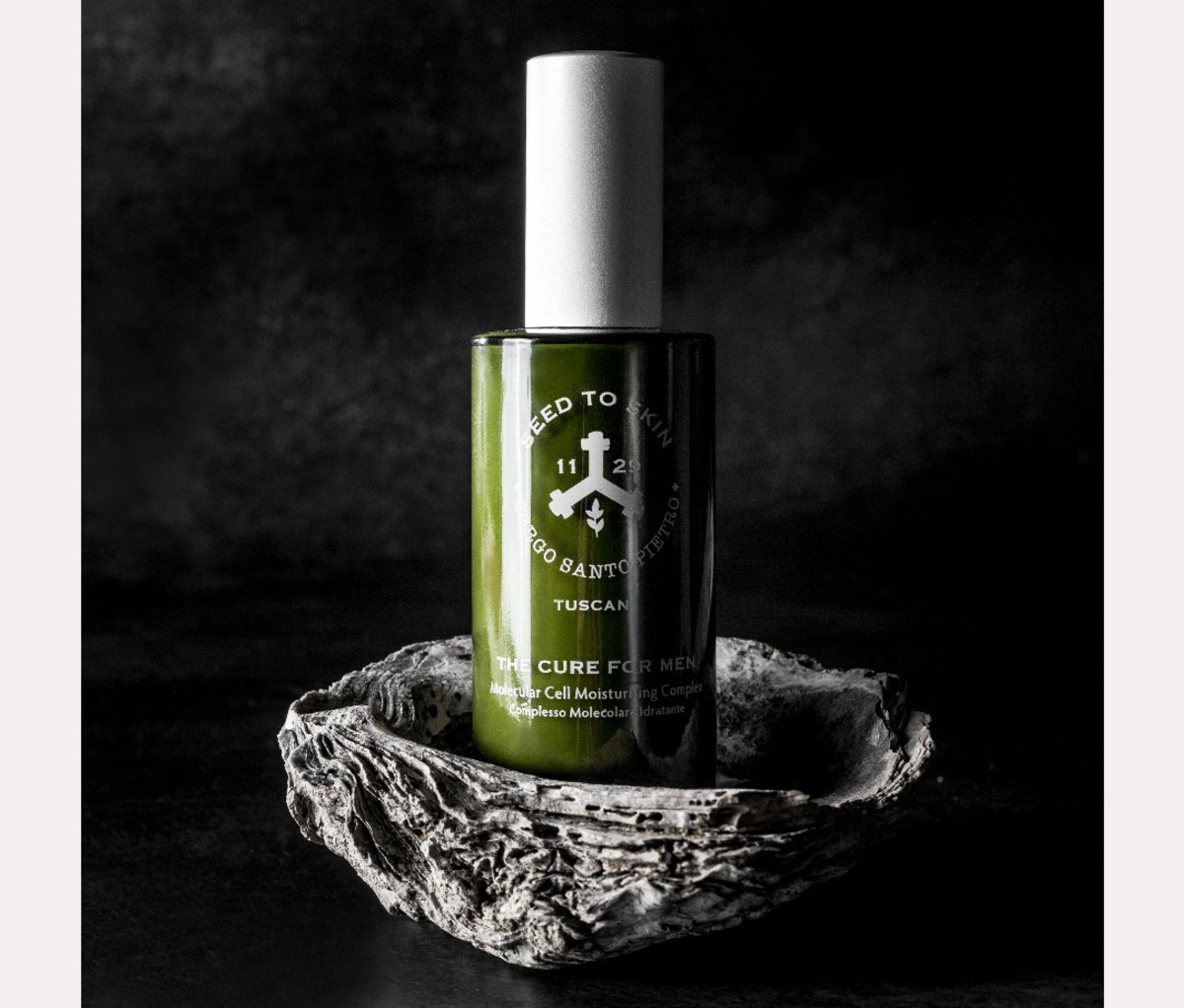
Seed to Skin: Green Molecular Science From Tuscany
You’ve heard of farm-to-table as the pinnacle of ethical eating. Seed to Skin is the skincare equivalent. Set among the rolling hills of Tuscany is Borgo Santo Pietro, a lavish resort built from the remains of a 12th-century outpost along a medieval pilgrimage route. Today’s retreat is also a holy site for visitors who seek respite among the best of belezza Italiana. Danish couple Jeanette and Claus Thottrup opened the doors in 2011. Over the past decade, they’ve expanded the property to 22 rooms and suites, adding the Michelin-starred Meo Modo restaurant, a 220-acre organic farm, and a leading spa that uses their custom line of organic skincare.
Jeanette Thottrup launched Seed to Skin as a testament to ingredients with powerful skincare benefits that need minimal intervention. It’s a mission that comes from an interest in holistic healing. Thottrup’s pursuit of natural health remedies eventually led her to the world of organic skincare, and to Dr. Anna Buonacore, an Italian cosmetologist. Together, they came up with the idea for results-based skincare powered by “green molecular science.” It’s a technology that identifies active ingredients down to the size of the molecules.
“In some cases, we have to research and test the individual formulas for over a year before being ready to launch.” explains production manager Cristina Guidarelli.
The custom-built Seed to Skin laboratory sits a short stroll away from the Borgo Santo Pietro estate in the sleepy one-bar hamlet of Palazzetto. Many of the ingredients come from the surrounding farmland. This includes everything from fragrant herbs and medicinal plants to raw honey and even sheep’s milk cheese. (The milk goes to a third-generation cheesemaker who makes Pecorino for the hotel; his workshop is located a few doors down.) Careful vetting takes place whenever outside growers come into the mix. They even inspect the type of soil they use to ensure sustainable practices meet the standards for its organic skincare.
Outsourcing is simply not an option for Thottrup and team. Formulas are individually mixed and bottled by hand on-site. Every batch is also assigned a number for transparency. There’s only pure goodness inside the signature emerald glass jars; no synthetic fillers or preservatives, plus the subtle scents come from all-natural sources, thanks to aromatherapist Lindsay Woodman.
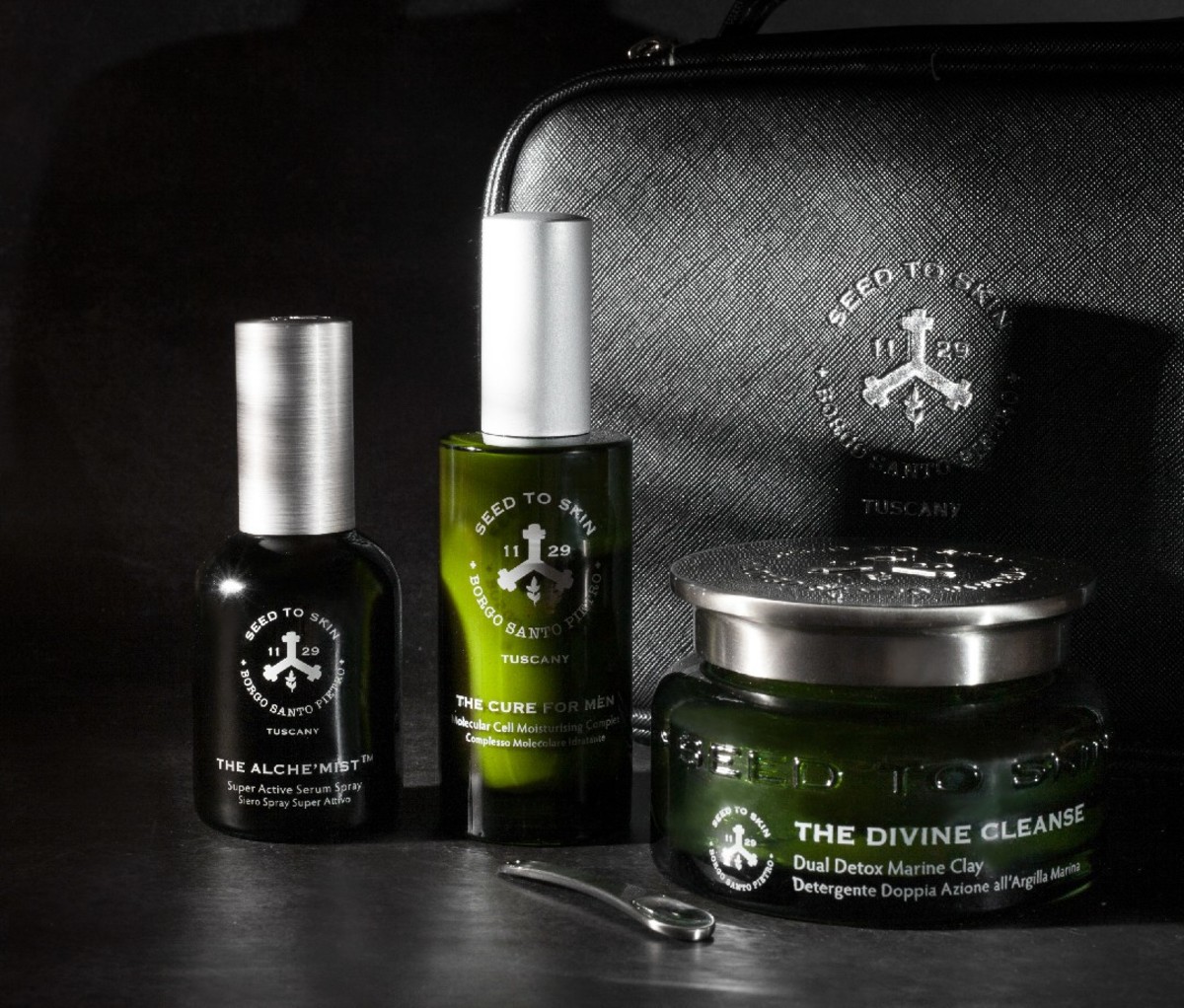
Best of all, the proven regenerative effects of Seed to Skin’s products don’t discriminate when it comes to gender. (The collection has actually always been popular among men.) And with the launch of its first-ever product dedicated to men’s grooming, Men’s Green Ritual Kit ($296), there’s even more to love. The Divine Cleanse is a detoxifying cleanser that can also be used as a shaving gel; The Alche’Mist is a nutrient-rich serum spray; and The Cure for Men is a version of its popular vitamin-rich moisturizer, tweaked just for guys, to lessen the effects of aging and inflammation.
is a nutrient-rich serum spray; and The Cure for Men is a version of its popular vitamin-rich moisturizer, tweaked just for guys, to lessen the effects of aging and inflammation.
“Men’s skin is more coarse and exposed due to shaving, so it’s important to strengthen the skin barrier and microbiome as much as possible,” says Thottrup.
Among the serum’s powerful ingredients are honey and hyaluronic acid to hydrate skin; peptides for anti-aging, plus prebiotics and probiotics to repair and rejuvenate. The Cure for Men is also the only Seed to Skin product that contains an extract from crocus bulbs that has restorative effects on skin.
“It’s able to reverse the aging process by stimulating the communication between skin cells,” adds Thottrup. “It induces the secretion of growth factors in keratinocytes that enhance the synthesis of collagen and elastin in the dermis. Thanks to its growth factor-like activity, it’s able to rejuvenate the skin matrix.”
That’s some powerful stuff.
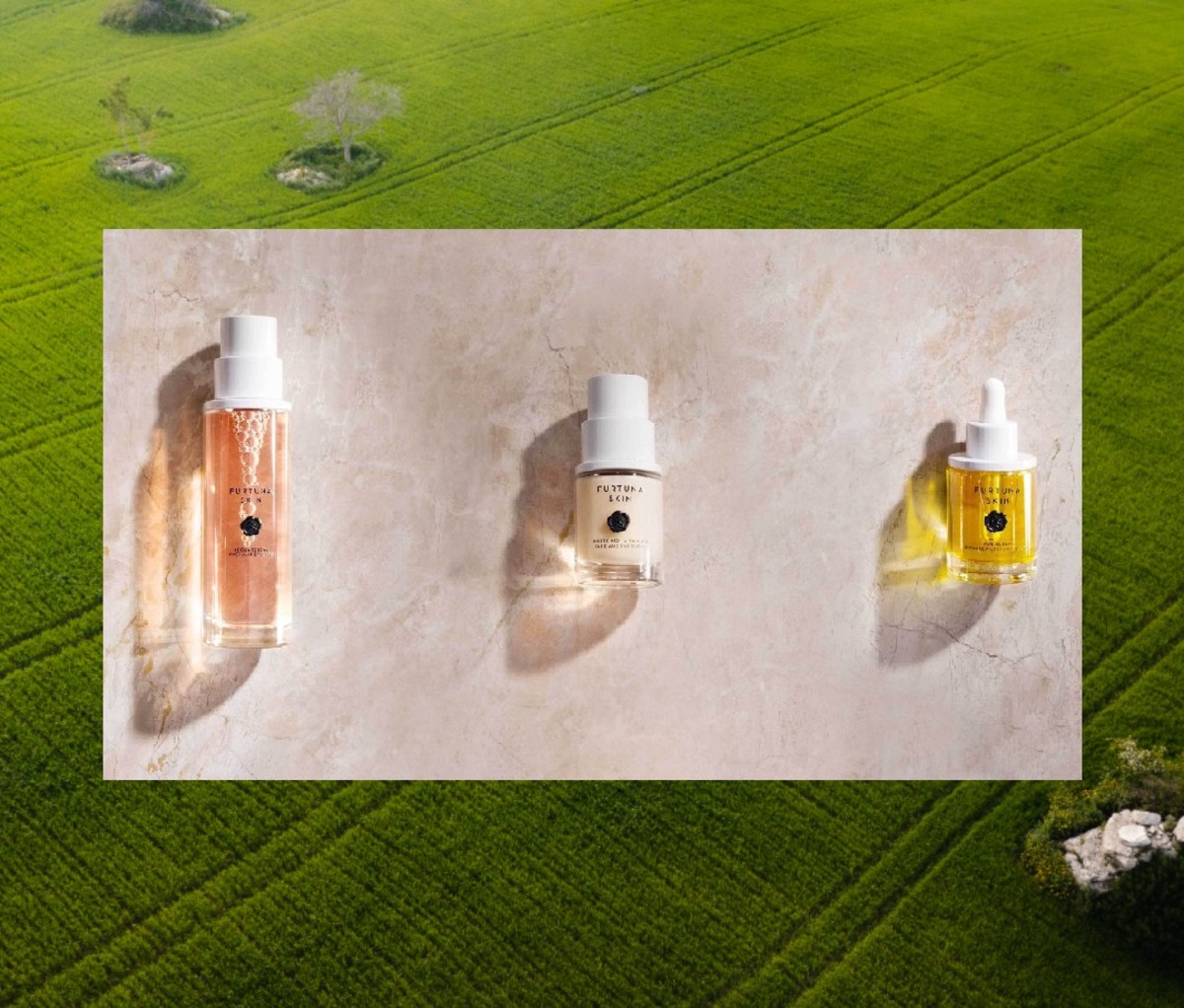
Furtuna Skin: Wildly Potent “Soundbath-Extracted” Ingredients From Sicily
Furtuna Skin also taps into the bounty of the Italian countryside for its line of organic skincare products, this time from the 856-acre La Furtuna Estate in rural Sicily. The bucolic corridor is home to an organic farm called Bona Furtuna. There are more than 12,000 olive trees and hundreds of medicinal plants blanketing its hills. Spring water streams down from Monte Barraù, the fourth-highest mountain peak on the island. This helps naturally irrigate organically grown botanicals that are used in the property’s custom skincare line.
It was launched in November 2019 by model Agatha Relota Luczo and beauty innovator Kim Walls. Fortuna Skin aims to address the age-old skepticism of organic beauty, namely around consistency and potency. And the secret lies in sound.
Furtuna Skin is the first skincare brand to use the Soundbath Extraction Method, a technique pioneered by the pharmaceutical industry. It sounds cool because it is. Conventional methods for extracting elements from organic matter usually entail harsh chemicals and overheating. It’s a process that can easily damage fragile ingredients. Instead, after hand-foraging and processing fresh-picked botanicals into fine particles, the Furtuna Skin team immerses them in oils. They then coddle the mixture with ultrasound energy at low temperatures, which extracts high potency bioactives. This rapid—but gentle—process preserves the integrity of nutrients and keeps antioxidant levels at a maximum. It’s also a difference you can feel.
Extraction Method, a technique pioneered by the pharmaceutical industry. It sounds cool because it is. Conventional methods for extracting elements from organic matter usually entail harsh chemicals and overheating. It’s a process that can easily damage fragile ingredients. Instead, after hand-foraging and processing fresh-picked botanicals into fine particles, the Furtuna Skin team immerses them in oils. They then coddle the mixture with ultrasound energy at low temperatures, which extracts high potency bioactives. This rapid—but gentle—process preserves the integrity of nutrients and keeps antioxidant levels at a maximum. It’s also a difference you can feel.
“We have access to the best ingredients in the world,” says Heather Records, vice president of brand at Furtuna Skin. “Why would we want to ruin them?”
Its Transformation Set ($225 travel size; $398 full size) includes Acqua Serena Micellar Cleansing Essence, Porte Per La Vitalità Face and Eye Serum, and Due Alberi Biphase Moisturizing Oil. The organic skincare trio boasts powerhouse ingredients like olive leaf water, olive oil, and magnolia extract. Together, they block free radical damage by 100 percent, defend against environmental skin stressors (thanks to antioxidants), repair the skin’s moisture barrier, and support skin’s natural collagen synthesis.
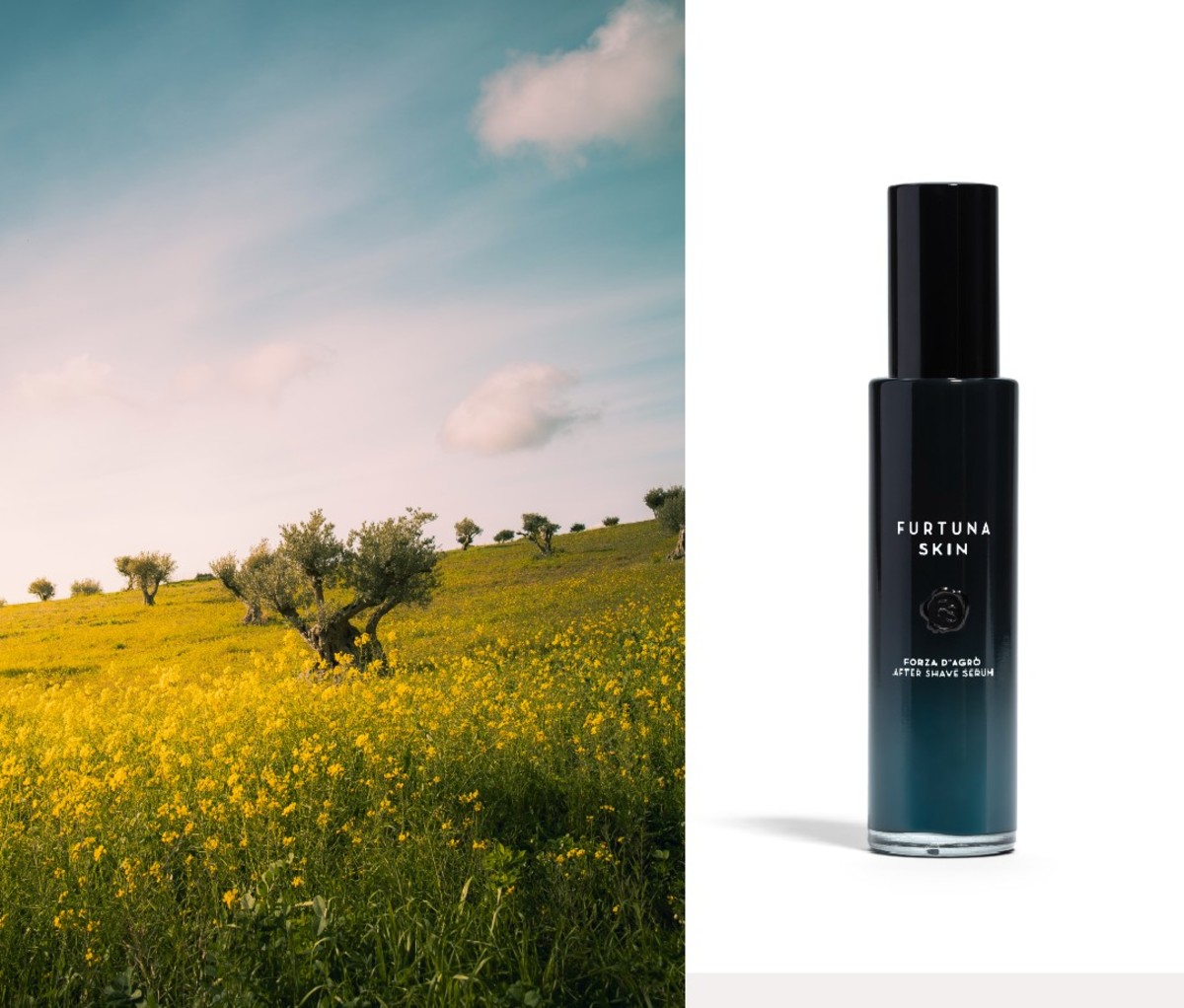
All of its products are unisex but, earlier this summer, Furtuna Skin released the new Forza D’agrò After Shave Serum just for men. The dual-purpose elixir uses skin-repairing properties that both lessen signs of fatigue while conditioning facial hair. Though there’s olive oil, borage oil, and shea butter in the formula, it feels super light and non-greasy. Calming prickly pear also rejuvenates the skin in the long term. With every use, the serum takes you on an olfactory journey through pastoral Sicily due to the presence of essential oils like lime, bay laurel, juniper, and rock rose.
All Furtuna Skin’s organic skincare products are available online and in-store exclusively with Shen, a wellness and beauty shop located in Brooklyn, NY. Shen also introduced a signature Gentleman’s Facial as a new treatment, with the Forza D’agrò After Shave Serum, to achieve stellar-looking skin. It might just be the closest thing to basking under the Sicilian sun—so take it.
from Men's Journal https://ift.tt/3C2JIxM
College Football's New 2021 QBs: Who Has the Best Chance at Success?
Not long ago, it was possible to win national championships without elite college football quarterbacks. Nick Saban’s Alabama teams did it three times between 2009 and 2012. Each time they relied on dominant defenses, punishing running games, and QBs who mainly had to make sure they didn’t throw too many interceptions.
But the sport has changed. Spread offenses that rely on high-volume, high-difficulty passing have put a premium on QBs who can chuck the ball around more accurately than their predecessors. It’s no longer possible to win it all without one of the best QBs in the country.
2021 is shaping up to be an interesting season. A big handful of potential title contenders, plus a few peripheral contenders who made their own runs last season, are replacing their QBs. Trying to figure out which teenaged QBs will dominate is tricky at best, but one way of sorting out their chances of success is to look at the teams they’ll be taking over.
Here are eight teams breaking in new starting quarterbacks this fall, ranked (from best to worst) by how favorable of a situation the young signal-caller will walk into.
1. Clemson
D.J. Uiagalelei keeps it himself to make it a one score game! pic.twitter.com/g0FayQc3p7
— ESPN College Football (@ESPNCFB) October 31, 2020
It’s hard to imagine a more ideal environment for new QB D.J. Uiagalelei. The former five-star prospect joined Clemson in 2020 and acquitted himself well in nine appearances. He also played admirably in his two starts while eventual No. 1 NFL draft pick Trevor Lawrence recovered from COVID-19.
Uiagalelei will stand behind a dominant offensive line, and his receivers are the most appealing targets a QB could ask for. Chief among them: The 6’4” Justyn Ross will return this year after a spinal condition cost him his 2020 season, and he should give Uiagalelei a premier deep threat.
2. Ohio State
Former five-star C.J. Stroud is poised to replace Chicago Bears draftee Justin Fields under center for the Buckeyes. The only reason Clemson’s situation ranks above Ohio State is that Uiagalelei has already had the chance to work in Clemson’s offense, while Stroud will see his first game action this fall. With Garrett Wilson and Chris Olave, Stroud has the best wide receiver duo in college football at his disposal. He’ll also work behind the Big Ten’s best offensive line and under the tutelage of head coach Ryan Day, one of the sport’s best QB developers.
3. Alabama
Bryce Young was the top QB recruit in the country last year.
He just threw his first collegiate TD pass
@_bryce_young @AlabamaFTBL
(via @SECNetwork) pic.twitter.com/r6pr4Sczzl
— The Checkdown (@thecheckdown) November 21, 2020
There is a case to be made that new signal-caller Bryce Young—yet another former five-star recruit on this list—is walking into a worse situation than recent Alabama QBs. But that is a highly relative statement. Young had a year to sit around and learn Bama’s offense as a true freshman in 2020, and while that offense will change somewhat now that Bill O’Brien has replaced Steve Sarkisian as offensive coordinator, it likely won’t be a total overhaul.
Young will have boatloads of talent around him, and Bama’s stingy defense will ensure he rarely has to play from behind. The Crimson Tide lost a couple of brilliant receivers, including Heisman Trophy winner DeVonta Smith, but returning wideout John Metchie III will soften the blow.
4. Texas A&M
It’s not entirely clear who will replace Kellen Mond as the quarterback for the Aggies. In fact, the position might be A&M’s biggest weakness in what could be a College Football Playoff year. But whether Haynes King or Zach Calzada earns the job, the eventual QB will have quite a supporting cast around him.
The Aggies’ pass-catchers are arguably the best in the SEC. Tight end Jalen Wydermeyer is one of the sport’s best over-the-middle threats, and Ainias Smith can put his game-breaking agility to use in numerous ways. The biggest problem facing A&M’s eventual QB might just be the pressure he’s under to keep a potentially historic season on track.
5. Texas
— Texas Football (@TexasFootball) July 29, 2021
The Longhorns have a QB battle on their hands between Casey Thompson and Hudson Card. Whoever wins and keeps the starting job will benefit from new coach Steve Sarkisian’s offense, which propelled Alabama’s undefeated run to the national championship last year. Texas should have decent units at running back, wide receiver, and offensive line, but it’s not likely that the Longhorns will be great at any one thing. Thompson or Card will have to do a lot of heavy lifting to improve UT’s standing in the Big 12, and that’s a tall order for either player.
6. Florida
New QB Emory Jones is a strong breakout candidate. A big, bulky player with strong running ability and a rocket arm, his athletic profile is kind of like a Tim Tebow with better throwing ability. But he’s entering a potentially difficult situation, with Florida’s two best receivers from 2020 (tight end Kyle Pitts and receiver Kadarius Toney) now in the NFL. Last year’s Gators relied a great deal on those two, as any team would have—they were two of the most devastating players in America.
Other than running back Malik Davis, UF will not retain a single player who received more than 20 pass targets in 2020. Combine that with a possibly weak offensive line and regular competition against high-end SEC defenses, and Jones will have a lot on his plate.
7. Notre Dame
Three-year starter Ian Book is gone, and Wisconsin transfer Jack Coan is in. Coan will have a difficult time getting Notre Dame back to the Playoff, which Book reached twice. The Irish don’t have a single wide receiver who appears to have game-breaking talent (though one could emerge), and the team’s offensive line just lost four players to the NFL. Coan has never shown much ability as a deep downfield passer, and he’ll likely have a hard time finding any targets this fall.
8. BYU
The Cougars are dead last in the Football Bowl Subdivision in terms of returning production. They didn’t just lose QB Zach Wilson to the NFL; they also saw their three best offensive linemen depart. And maybe just as critically, highly regarded offensive coordinator Jeff Grimes, the architect of the offense Wilson led so beautifully in 2020, left to take the same job at Baylor. New QB Jaren Hall might be good—he showed some flashes in his last game action in 2019—but he’s walking into a meat grinder.
from Men's Journal https://ift.tt/3C53hWf
The Best Week 1 College Football Games to Watch This Season
The first week of the college football season is quickly approaching, but for football fans, it can’t come soon enough. While season-long predictions based on teams’ performance in Week 1 college football games are always a little sketchy, there may be more of that than usual this year. For one thing, everyone’s skittish after a farcical 2020 season that saw 139 game cancellations or postponements. We’re eager for a return to normalcy, and that means picking studs and duds as quickly as possible. But that’s not the only reason: This fall’s Week 1 schedule—unfolding across the week of September 4—really is juicy.
Here are seven Week 1 games that stand out as events to circle on your football calendar.
Thursday, 7 p.m. (EDT) on ESPN: Boise State at UCF
These have been the two defining “non-power” programs of the last decade—and in Boise’s case, longer than that. Both have proven they can hack it with anybody in the Power 5 conferences, and both have had to scrap for national status.
But both programs are in transition right now, as their head coaches (Boise’s Bryan Harsin and UCF’s Josh Heupel) left to take over the programs at Auburn and Tennessee last winter, respectively. The Broncos hired former Boise player and assistant Andy Avalos, and UCF brought on recently fired Auburn head coach and king of college football buyouts Gus Malzahn. In addition to a fun kickoff game, this will be a curiosity-quenching look at the teams’ two new head coaches.
Saturday, 12 p.m. (EDT) on FOX: Penn State at Wisconsin
#BadgersInSix (weeks) pic.twitter.com/UUKYNnXSdY
— Wisconsin Football (@BadgerFootball) July 25, 2021
There’s likely to be some anxiety in the air at this premier Big Ten game. Penn State started last year 0–5 before winning its last four games to finish 4–5, and Wisconsin went a tepid 4–3 while failing to claim its usual place atop the conference’s West division. (Northwestern won it instead.)
Whoever wins this one will be off to a nice start in an effort to post a rebound season. Whoever loses—especially if it’s Penn State, which will still have to get through the more difficult East division after playing Wisconsin—will quickly cut into their margin for error.
Saturday, 2 p.m. (EDT) on Pac-12 Networks: Fresno State at Oregon
Fresno State should be tons of fun to watch this season. The Bulldogs were just so-so in 2020, but they have almost all of their key players back in the fold. Quarterback and Washington transfer Jake Haener, running back Ronnie Rivers, and receiver Jalen Cropper should all be among the best players in the Mountain West.
On the other hand, Oregon should again be a top-tier contender in the Pac-12. This year, the Ducks have maybe the best returning defensive player in the country: defensive end and potential No. 1 overall NFL draft pick Kayvon Thibodeaux. Oregon should win this game, but it will be instructive to see how strong both teams look and if newly minted Oregon starting QB Anthony Brown plays well.
Saturday, 3:30 p.m. (EDT) on ABC: Miami vs. Alabama
45 days. See y’all in Atlanta
#BamaFactor #RollTide pic.twitter.com/JkbLwI3DVq
— Alabama Football (@AlabamaFTBL) July 21, 2021
Here’s how Bama usually treats Week 1: The Crimson Tide like to play a neutral-site game in some NFL stadium (this year, it’s in Atlanta) against a decent but overmatched opponent whom they promptly destroy. That will probably happen again this year.
But maybe it won’t! There are numerous reasons to think the Tide will be slightly worse off this season than normal, and if you squint right, you could imagine ultra-skilled Miami QB D’Eriq King dropping a lot of touchdowns on the Bama defense. It’s not likely, but there’s some chance the Hurricanes put up a good fight in this game and at least make Tide fans sweat. This will also be the last of Bama’s long series of neutral-site openers, as they start a home-and-home, on-campus series with Texas in 2022.
Saturday, 4:30 p.m. (EDT) on Fox: Louisiana at Texas
The Ragin’ Cajuns will be heavy underdogs in this game. But should they be? They were a better team than Texas in 2020, when they made the Sun Belt Championship and the Longhorns sputtered to their now-typical mediocre bowl game appearance. And Louisiana has more returning production than almost anyone in college football, while Texas has both a new head coach (Steve Sarkisian) and a new QB (Casey Thompson) to break in. Louisiana has one of the most athletic rosters in the Group of 5 conferences, and it would not be surprising if Billy Napier’s team gave the Horns a run in Austin.
Saturday, 7:30 p.m. on Fox: Georgia vs. Clemson
The Tigers are comin’ for you #ACCKickoff pic.twitter.com/V7siPww89H
— Clemson Football (@ClemsonFB) July 21, 2021
This will be the premier game of not just Week 1, but maybe the entire season. The Bulldogs and Tigers will play at Charlotte’s Bank of America Stadium, and the winner will become an instant national championship favorite (at least in the eyes of many onlookers).
For Clemson, it’s the start of a new era. With QB Trevor Lawrence off to the Jacksonville Jaguars as the NFL’s top draft pick, five-star second-year man D.J. Uiagalelei will step into the sport’s most important position. (Uiagalelei started a few games in 2020, when Lawrence tested positive for COVID-19, and the understudy played well.)
Georgia has a returning QB in JT Daniels, but the Dawgs will have their own questions to answer. Maybe the most pressing: How will UGA’s ostensibly dominant offensive line hold up when it faces Clemson, perhaps the country’s most fearsome defensive front?
Sunday, 7:30 p.m. (EDT) on ABC: Notre Dame at Florida State
Notre Dame will be worse than last year, when the Irish made the College Football Playoff. Florida State will be better than last year, when the Seminoles went 3–6. The question is how far one team will move down and the other up.
The Irish are one of the few teams that haven’t retained the vast majority of their key players from 2020, and their losses include three-year starting quarterback Ian Book. They’re also moving back to conference independence after playing 2020’s schedule in the ACC.
FSU is living in a new world now that second-year coach Mike Norvell overhauled the roster with transfer pickups from other teams. The most critical to a turnaround, by far, is former UCF quarterback McKenzie Milton, who was one of the best players in the country before a devastating knee injury late in 2018. If Milton is healthy and back to his old self, the Noles’ fortunes will change in a hurry.
from Men's Journal https://ift.tt/3795l1a
Teva Releases Revive '94 Mid: Light Hiker With Heavy '90s Inspiration
Best known for its iconic strappy sandals, Teva is mining those classic designs for a new line of footwear coined the Archival Revival Collection. The first item—the Revive ’94 Mid—has been released, and it combines a strong vintage aesthetic with a plush sole and some high-tech materials. It’ll make a sporty pick for everyday wear, or a capable shoe for your next camping trip.
The Revive ’94 Mid falls squarely in the shoe category, but it draws inspiration from an earlier Teva sandal. The design pulls from a hiking sandal that was built for navigating slot canyons, according to the company. The Black/Tan version features multicolored overlays that evoke desert landscapes. Combined with the iconic patterned straps across the upper, there’s no mistaking this is a Teva shoe—and one inspired by the ’90s.
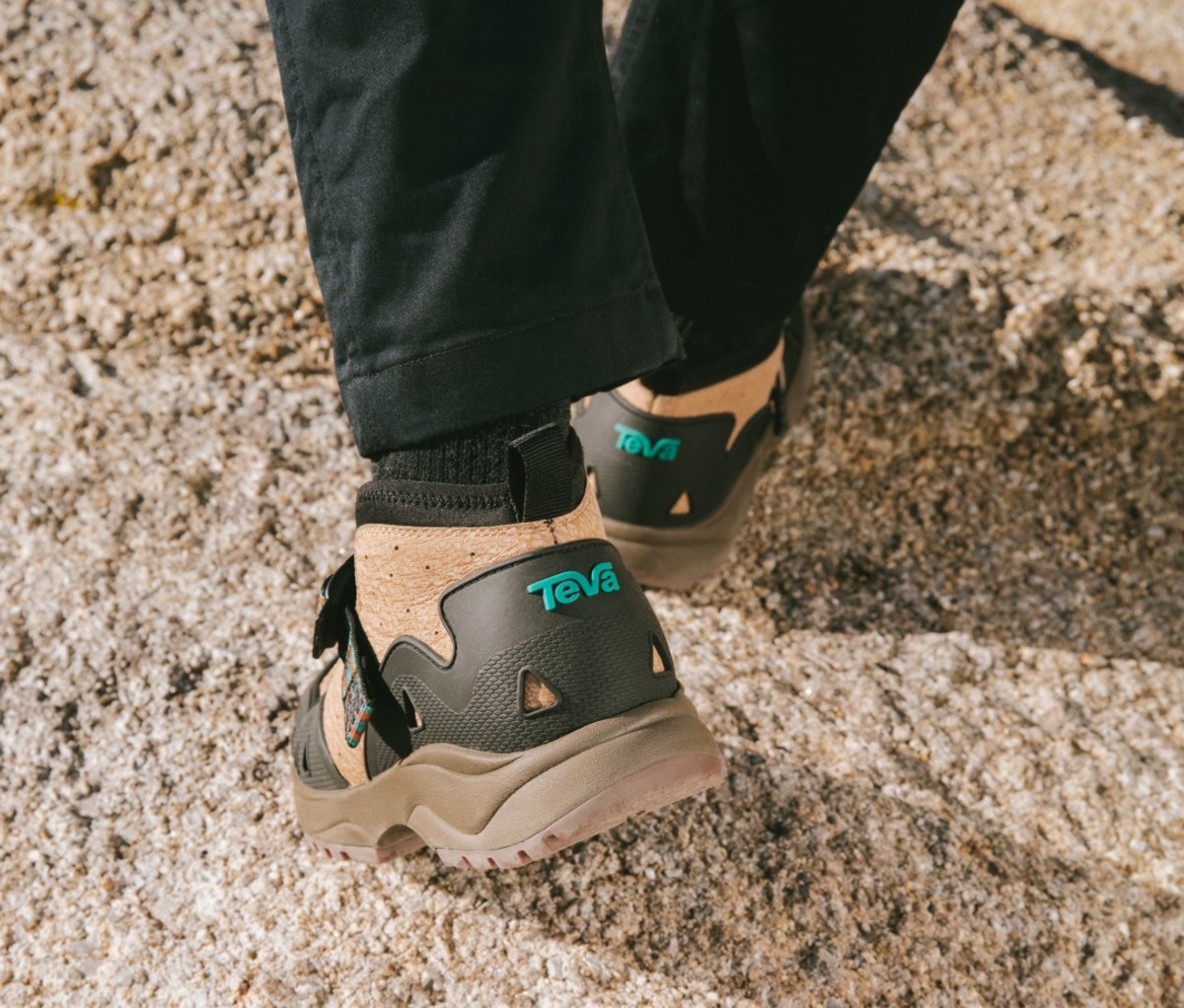
Aesthetics aside, there’s plenty of tech to discover as well. The upper is treated with a water-resistant coating to help rain bead and roll off without saturating, and a layer of mesh across the top of the foot adds breathability for muggy days on the trail. It also features waterproof leather for extra protection from the elements and the top of the shoe is made with a stretchy neoprene-like material. It moves with your foot and is easy to slip on and off. Additionally, a hefty TPU bumper protects your toes while built-in drainage ports help water escape if you take a wrong turn into a puddle.
Teva also designed the Revive ’94 Mid with sustainability in mind. The leather overlays are sourced from tanneries certified by Leather Working Group, which promotes sustainability in the industry, while the straps are made from recycled plastic. The inside of the shoe also comes with a waffle knit lining made from 100 percent recycled polyester.
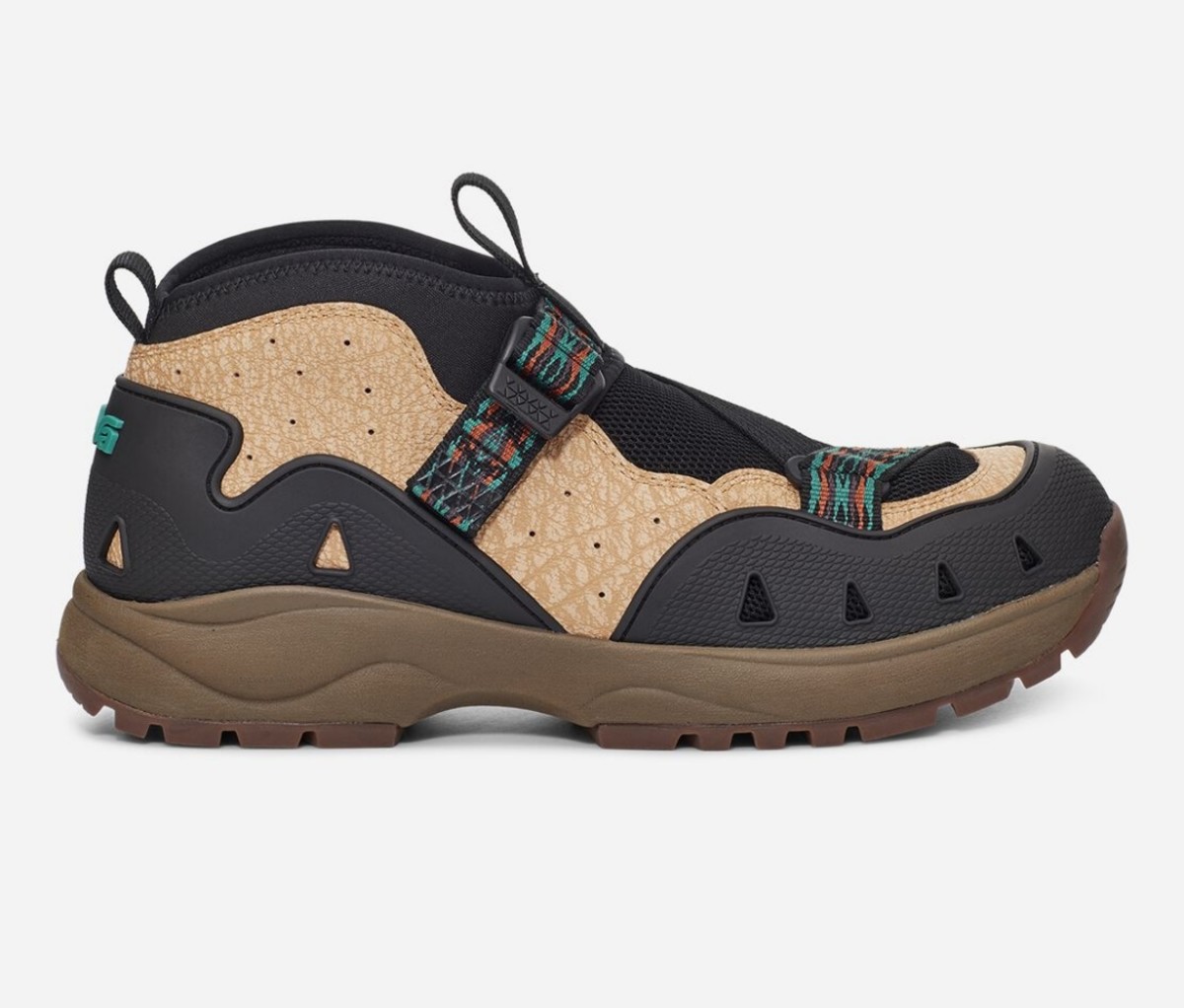
The burly sole contains some innovative tech as well. Teva used its new MAX-COMF memory foam insole for a cushy step-in feel, and it rides on top of a molded EVA midsole with a nylon shank that creates extra support for your foot. Combined with a grippy “Spider Rubber” outsole, the Revive ’94 Mids should deliver a stable, confident ride through uneven or rough surfaces.
Looking to add a vintage vibe to your next camping trip? Add these to your cart.
[$160; teva.com]
Get itfrom Men's Journal https://ift.tt/3BT1T8N
How Bow Hunting Gives Pro Triathlete Max Fennell a Competitive Edge
Professional triathlete Max Fennell was in between sips of coffee when he answered the call for our mid-morning interview. It wasn’t Folgers in his cup, but rather a freshly roasted brew from Fenn Coffee, the company he founded in 2018. You see, Fennell isn’t your average athlete.
“I’m just one of those people who doesn’t want to wait for things to get done,” Fennell says. “I’ll just go do it.”
When he’s not running his coffee company or competing in a grueling triathlon, Fennell’s mind-boggling busy schedule includes serving as chair of the Community Engagement and Outreach Committee for Menlo Park––Fennell’s hometown in the Bay Area. He’s appeared on various competitive TV shows, including a stint on Million Dollar Mile (a reality show produced by Lebron James and hosted by Tim Tebow). And if that’s not enough, he picked up bow hunting last year during the pandemic and now considers it one of his secret weapons.
Fennell identifies as an entrepreneur, hunter, and public servant, even if triathlete is what he’s best known as.
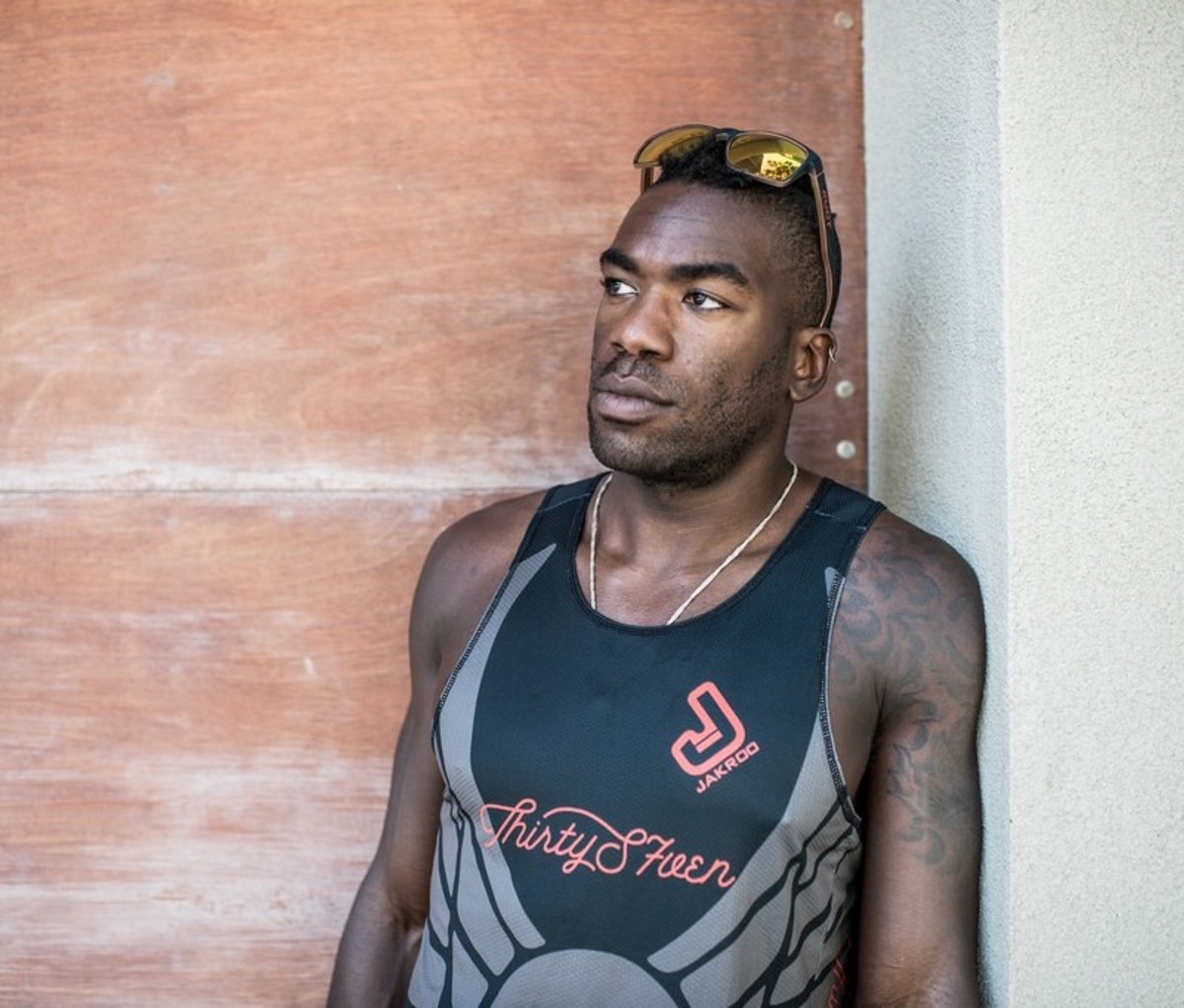
On August 15, Fennell will be standing on the starting line of what he considers his home race: Escape From Alcatraz. This grueling race attracts two thousand athletes from over 50 countries, all of whom will be confronted with a 1.5-mile swim in the San Francisco Bay’s choppy water, an 18-mile bike ride up and down the city’s steep hills, and an eight-mile run that features the soul-crushing Sand Ladder––a brutal set of cliff stairs. Most people would shudder at the thought of this race, but the unpredictability, the grind––that’s what Fennell lives for.
“There are a lot of variables you have to account for,” Fennell says. “This is a race where you can’t expect anything. You’ve just got to wait and see what happens on race day, then adapt.”
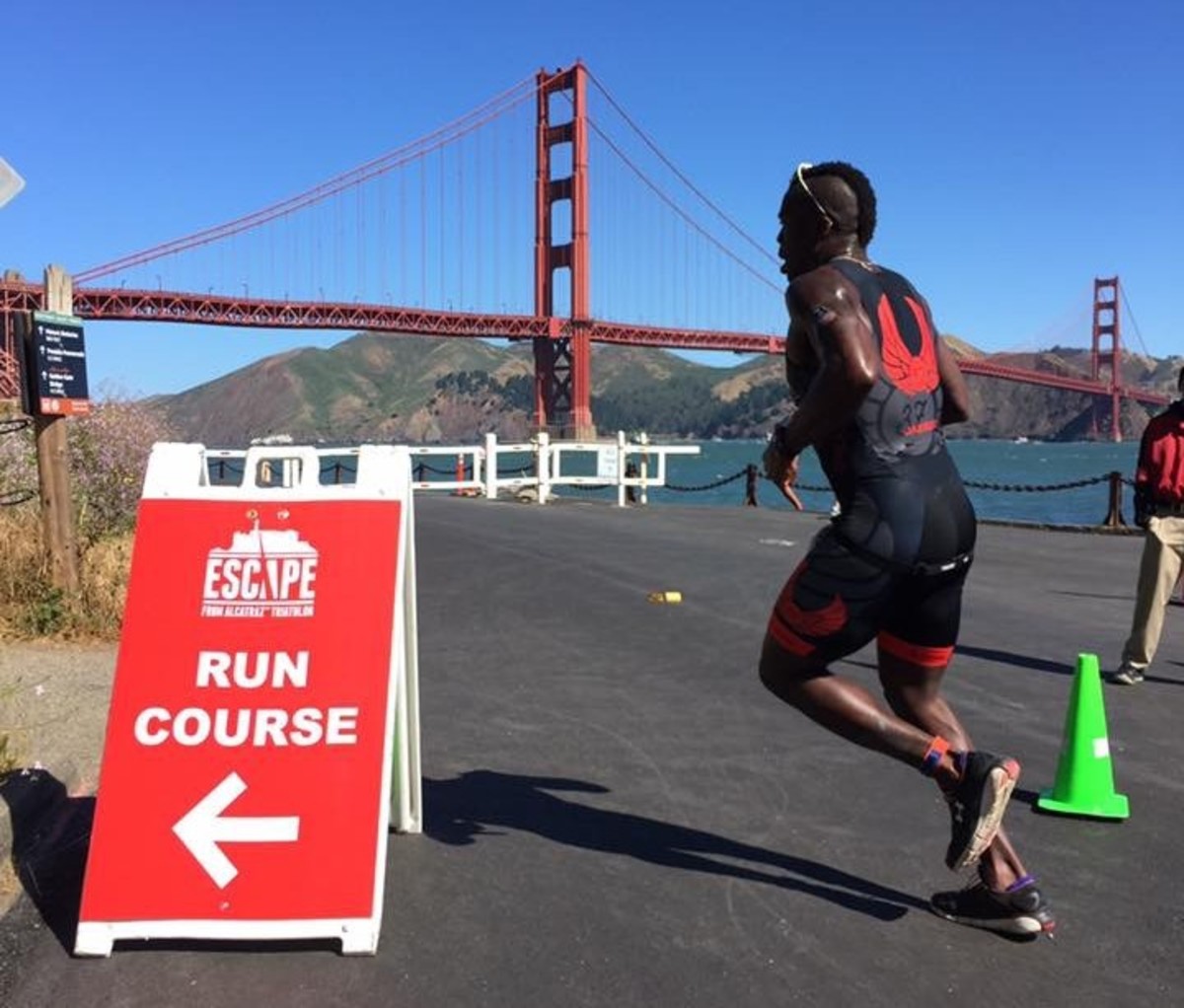
Fennell will enjoy a home-field advantage, as he regularly trains in a lagoon that connects to the San Francisco Bay’s chilly waters––negating one of the most daunting elements. In addition to his cold-water swim training, Fennell relies on a consistent biking and running schedule to stay in peak condition. While other triathletes stress about race prep and obsess over executing their plan, Fennel understands this race requires a different mindset.
“It’s all about showing up to the race feeling strong and confident knowing you can handle whatever’s thrown at you—not being worried about who’s showing up on race day,” he says.
This mindset can be attributed to last year, when he had an opportunity to compete in the Spartan Games––an obstacle course endurance race that features up to 30 different obstacles. The experience inspired him to change his approach to racing—to focus less on winning and more on competing and pushing himself to his outer limits. And Fennell’s not just pushing himself to the edge in triathlons.

The 33-year-old recently began backcountry bow hunting, a challenge that tests both his physical and mental limits in ways triathlons can’t. I could hear the excitement in his voice as he described the arduous task of carrying a 60-pound backpack up a mountain along rugged ridgelines. He spoke of stealthily pursuing turkeys for five straight hours while battling nature’s raw elements––gusty winds, wild temperature swings, and other four-legged predators. It’s not the type of experience most people, much less most triathletes, experience.
“Hunting is actually going to make me a stronger athlete more than anything,” Fennell says. “I think that’s the biggest edge I have over my competitors.”
Later this year, Fennell will try air gun hunting in Texas as part of a hunting television show—but that’s as close to hunting with guns as Fennel is interested in. He’s a bow hunting purist at heart and revels in the unique challenge and danger that comes with hunting in the wilderness.
“When you’re doing a competition, you’re competing with another human and trying to win,” says Fennell. “With fight or flight, you’re wondering if there’s a grizzly bear or a black bear around you. It’s a different kind of fear, but it unlocks a different level in your brain to go deeper and harder.”

Throughout his life, Fennell has never been afraid to dig deeper or go harder to overcome an obstacle in his way.
In 2014, Fennell made history by becoming the first black triathlete to get his pro card. Unfortunately, the sponsorship dollars didn’t follow. While he’s managed to support himself through starting his business, Fenn Coffee, he’s now working on a new initiative to pave the way for other black athletes trying to break into the sport.
“There’s still not a lot of opportunities for black endurance athletes in terms of sponsorship or any support,” he says. “I realized we need to create an initiative to address that and help provide opportunities to open doors.”
He’s currently in the process of building a non-profit organization, the United Endurance Project, which will work to identify and provide financial support to black endurance athletes on the cusp of going pro in triathlon or OCR racing.
The bigger the obstacle, the more motivated Fennell is to overcome it. It’s an outlook we can all benefit from.
from Men's Journal https://ift.tt/3faC62g
Article One x Mission Workshop Sunglasses: Enduringly Cool and Rugged
We love a mashup between brands with similar visions and a fervor for premium craftmanship. Our latest obsession comes from Article One, curator of heirloom eyewear, and Mission Workshop, maker of technical gear and apparel. Their titular masterpiece, Article One X Mission Workshop, is a twist on navigator sunglasses.
The styling comes from Article One’s roots. Its eyewear is all handmade in a village in northern Italy, right at the base of the Dolomites. You can see the Italian influence in the slightly retro, angular frames. The double brow bar imbues an aviator, but maintains the more rectangular shape and geometry of a classic navigator. It’s stately, bold, and injects instant style to your look.
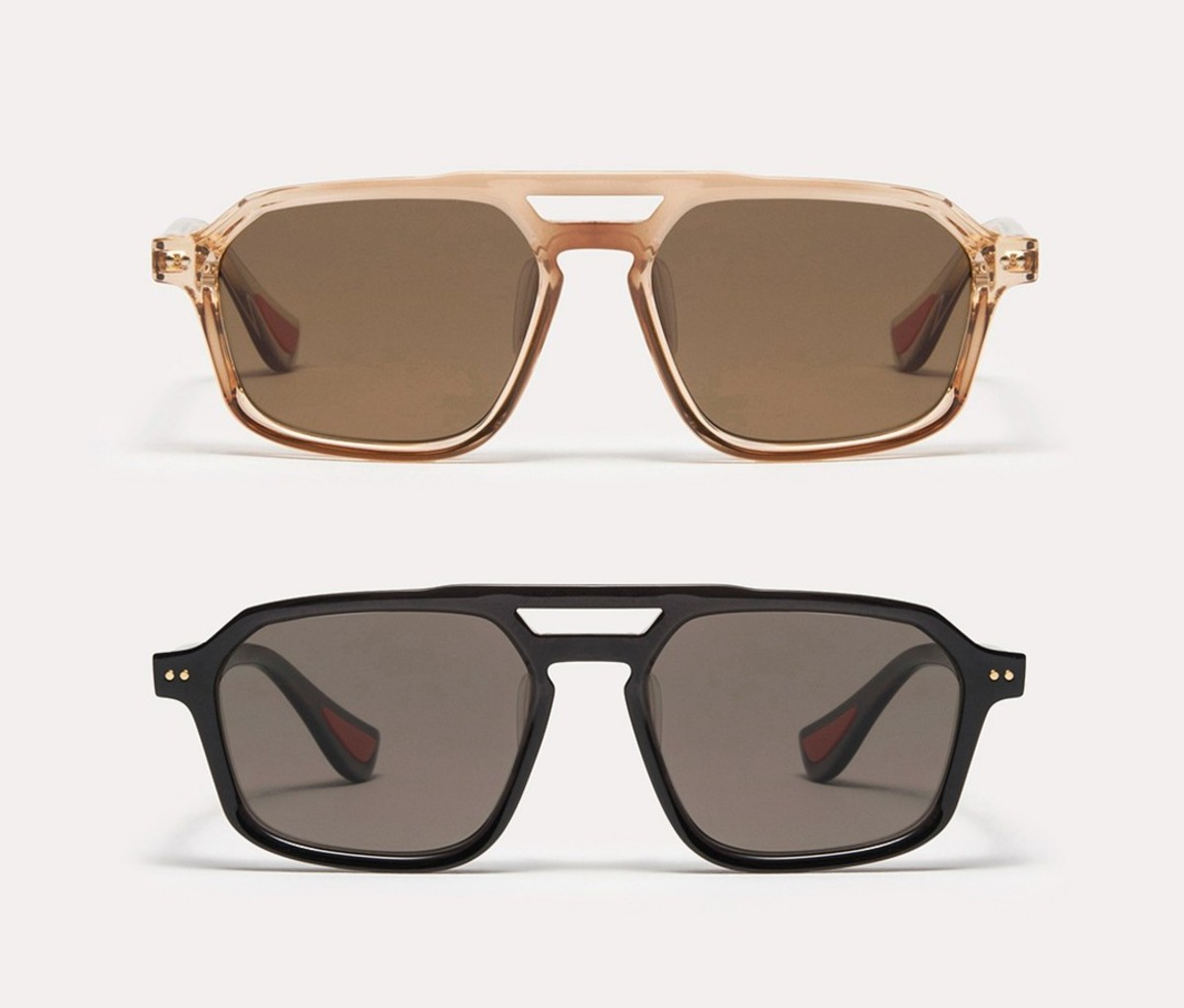
The frames themselves are made from a thick TR90 polymer, making them lighter, more durable, and more flexible than acetate. It’s the perfect material for this wear-everywhere frame. Article One X Mission Workshop is meant to transcend sport and lifestyle—to be a beacon of versatility—and boy do they deliver.
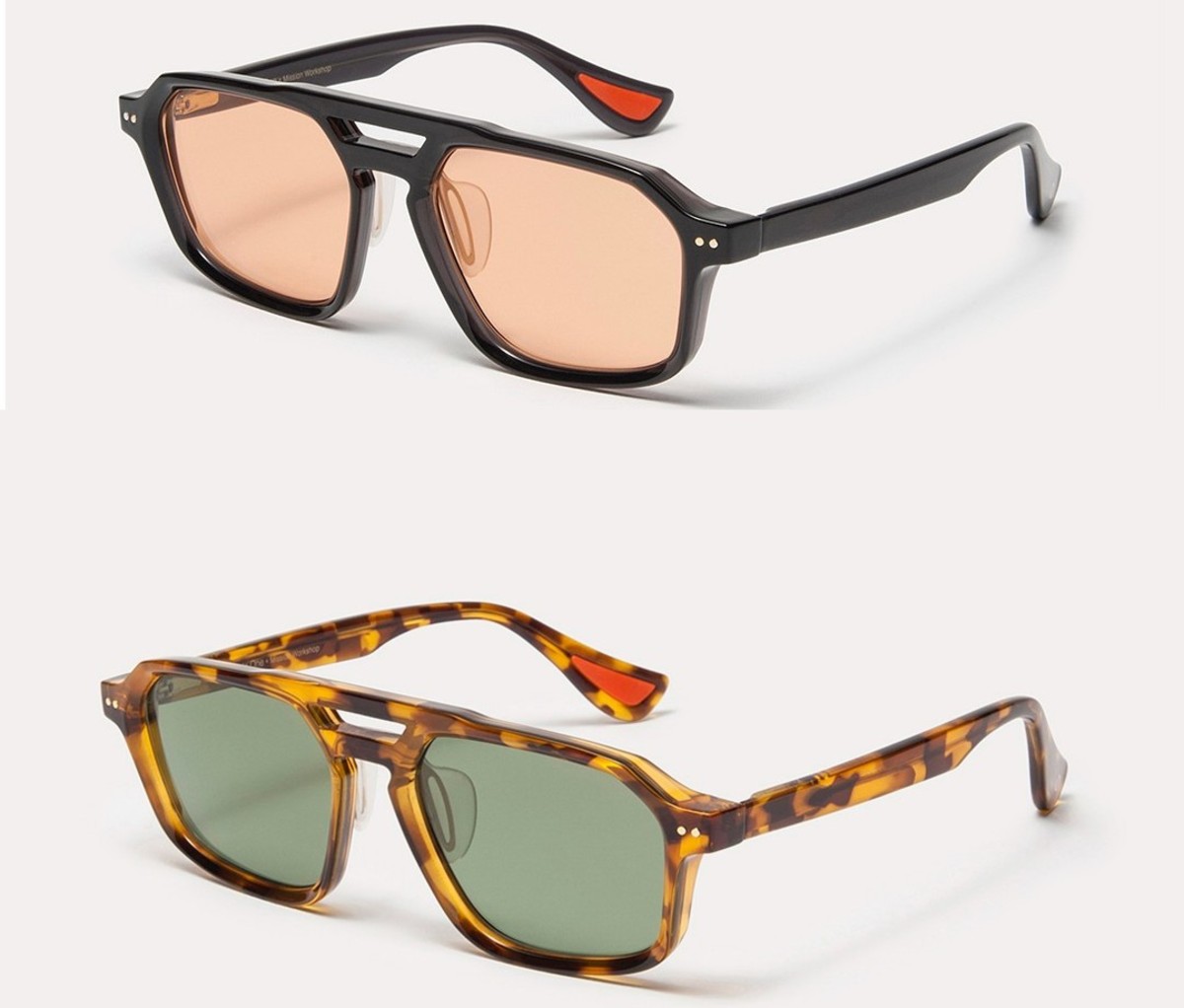
Performance specs include substantial silicone nose pads that extend around the bridge’s wire core skeleton. Give that a squeeze during high-octane pursuits (think bombing down single track, running through trails, skateboarding on winding streets) for better grip and hold. Coupled with silicone pads at the temples and spring hinges, these suckers aren’t going anywhere.
Inside the frames are polarized Italian Divel lenses that block 100 percent of UVA/UVB rays and mitigate road glare. The back side of the resin lenses are beefed up with an added coating to further block light reflecting off your eyes. Get ’em while they’re hot.
Available in Black (grey or amber lens), Vintage Crystal, and Tortoise.
[$255; articleoneeyewear.com]
Get itfrom Men's Journal https://ift.tt/3fcCL39
U.S. Paralympic Athlete Ezra Frech Wants to Be the Conor McGregor of Adaptive Sports
Sixteen-year-old Ezra Frech has a busier summer than most kids his age. He’s going to the Tokyo Paralympic Games, where he’ll represent the United States as the youngest member of the track and field team. Although making a team stacked with full-grown men is a remarkable feat, for Frech, it’s all part of the plan: He’s dreamed of going to Tokyo since he was 11 watching the 2016 Paralympic Games on TV. Frech made a promise to himself that he’d make it—and he’s working to keep it.
Frech was born missing his left knee and fibula, and competes using a prosthetic running blade in the 100-meter sprint, long jump, and high jump. From two-a-day workouts to his work with Angel City Sports, the adaptive sports organization he founded, he has a packed agenda. But the Los Angeles-based Paralympian squeezed in a call with Men’s Journal in between to talk about how he’s preparing for Tokyo, his ultimate goals, and how he wants to become the Conor McGregor of adaptive sports. Yep, you read that right. Check out the conversation below.
Men’s Journal: You’re the youngest member of the U.S. Paralympic Track & Field team. What’s that like? Do you feel any extra pressure?
Ezra Frech: It’s interesting. I do enjoy when I have a lot of pressure on me. But in this scenario, I’m the underdog. I came in last place in all my events in 2019 at the World Championships. I know I’m going to do significantly better now, maybe even contend for medal spots in all my events. The cool thing is I’m 16 and I’m going up against these guys who are 25 and 26, and this is their job. This is what they do every day. I train really hard to be here, but I’m in school. I don’t feel more pressure; if anything, I feel like I’m coming in with nothing to lose. These other guys are grown men. They don’t want to get beat by a 16-year-old.
What do you want to prove in Tokyo?
I know I’ll have more Paralympics in me after Japan, but I do want to prove I can be a medal contender in all three of my events. I think I’m capable of doing so. At the same time, I’m coming into each of these events ranked near the back. I’m definitely not ranked for medal contention. But my coach, team, and family know what I’m capable of. For the high jump, I’m in a pretty good medal spot right now. I actually think I have a chance to win it if all goes well. But in the 100 meter and long jump, I’m in a position where I’ve got to put together something truly special. I want to prove that age doesn’t make that much of a difference; it’s really about how hard you work and how smart you are with the time you have.
What does a typical training day look like for you?
Training’s pretty chaotic because we’re balancing three events that are extremely different. They have very little in common, and all require different forms and different thought processes. I think I’m the only athlete on the entire U.S. team that does those three events. We’re balancing our time and bouncing between different events throughout the whole day. I’ll give you what yesterday’s training session was.
We did a long jump session from 8 a.m. to about 10:30-ish. I came back home, rested and recovered, then came back at 4 p.m. and did sprints, a little bit of high jump, and lifted weights. I went home, stretched, recovered a little bit, then went to bed. An average day would have about two of those two-and-a-half to three-hour sessions, with recovery in the middle.
Obviously during the school year I wouldn’t be able to spend as much time on the track with school from 8 a.m. to 3 p.m. with homework and all that stuff, but in summer we’re able to hit these two-a-days where I don’t really have much going on except for training, eating, sleeping, and recovering.
How do you recover?
Recovery is such a huge part of the training right now, because we’re so close to Tokyo and I can’t afford an injury. I can’t even afford being sore coming into a training session. I use a Therabody RecoveryAir. It’s a compression sleeve to help flush out lactic acid. Then I use the Theragun to release muscles. I take active ice baths before I have a training session if I know I’m a little sore and going to need a bit of freshness in my legs. I’m constantly stretching. When I get home, I just take some food, put on the RecoveryAir, and sit in my bed for a few hours—maybe take a nap or write about the training session. I sit there and decompress. I get off my leg, give it time to rejuvenate.
How do you prepare mentally to be on the world’s greatest stage?
I’ve competed at the World Championships before; nothing like the Paralympics though. There’s a different energy, a different feeling. As far as preparing myself mentally, I have a sports psychologist I work with. I do lots of meditation with my mom. She’s heavy on the mental stuff. She makes sure I’m doing lots of visualization. There are many athletes who get in their heads and get super quiet before they compete—just put on headphones and don’t talk to anyone. That’s not me. I’m laughing, I’m cracking jokes seconds before I’m about to take the biggest jump of my life. At trials, I was making a joke with the official about how I didn’t have a girlfriend or something like that. I was messing around literally seconds before I was about to take a jump that I’d spent five years of my life training for. When I ground myself in these big moments, it’s just being myself, having a good time, laughing. That’s me. I know how I’m going to combat the nerves and anxiety. I’m just going to be myself.
What was it like getting your first running blade?
I got it when I was about 4 years old. My family went to the park and we ran around for a little bit, figured it out, played around with it. It’s very interesting because I still do the same thing when we make an adjustment. We go to the park, we go to the track, we go to an open area and I run around and figure things out the same way I did before. Not much has changed about the process.
How did you choose a prosthetic leg for competition? What goes into that decision?
For above-the-knee amputees, the leg basically consists of three parts. The socket—where the stump or nub goes—is what holds it, and that’s where you have control. You can move it around. Then there’s the knee. There are tons of different knees, but the majority of the top athletes use the same one. And then there are lots of different blade manufacturers. The blade is the place where most of the adjustments are made—the angle, steepness. Some people customize theirs. There are certain ones for long jumping and sprinting—ones that are split down the middle so you can run the curve better. You want to find what you feel most comfortable and fastest on, that’s the big thing. Once you’ve chosen a blade, then it’s about optimizing, maximizing, and dialing in that setup.
For us, we moved the blade back a little bit so I could get the most compression out of it, then we adjusted the alignment of the knee. My femur turns a little bit when I run, so we adjusted that a few degrees to the left so we knew when the blade was coming back down on the ground, it was hitting perfectly straight. Those are just a few basics. We were making adjustments all the way up until three weeks before trials, which I don’t recommend any other athlete do, but somehow it worked out. I was able to adapt pretty quickly.
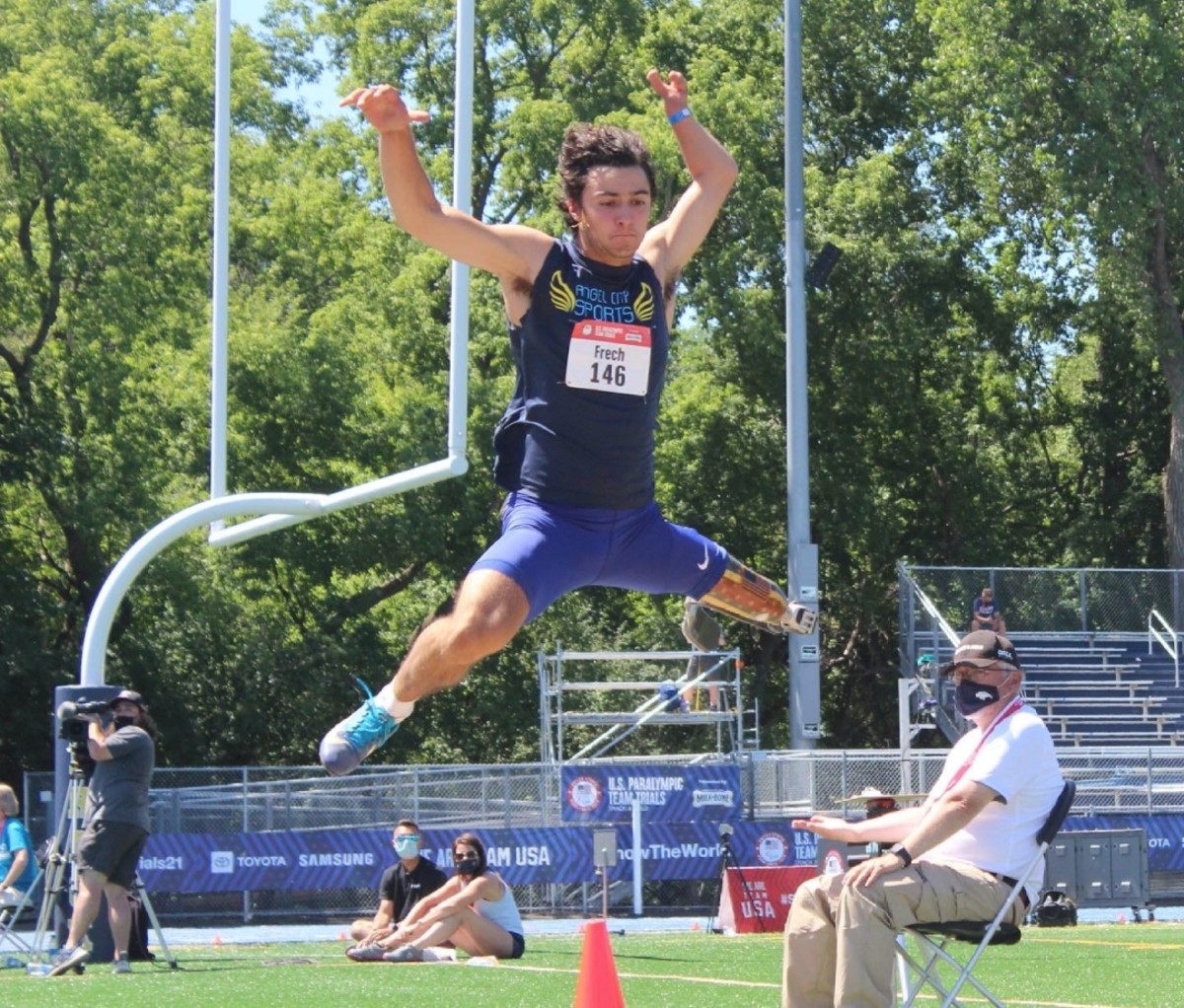
Why did you pick your three events?
The Paralympics is interesting because there are so many different classifications, or people with different disability types. As far as my classification for people missing their legs, I have the 100-meter, long jump, high jump, and javelin. I competed in track since I was 8, and when I was younger, my dad and I would fly across the country for these big national track meets. He would sign me up for every single event. I did the 60-, 100-meter, 200-meter, 400-meter, long jump, high jump, discus, javelin, shot put. Everything.
He’s like, “If we’re coming all the way out to Madison, Wisconsin, we’re doing every single event.”
So we did every event for a while, then I settled down and focused strictly on the high jump for a few years there. But just this year, I started to focus on all three. That was a cool little transition we made through the pandemic.
A lot of the athletes I compete against only do the 100-meter or only do the long jump and 100-meter. The high jump is vastly different. None of the top guys have danced over to the high jump side. It definitely makes for difficult days and difficult competition schedule, but I think that’s what adds this cool complexity to the story. I love these three events so much.
Looking beyond the Paralympics, what are your athletic goals?
I want to be a gold medalist and a world record holder in all three of those events, and I want to do it in L.A. at the Paralympic games in my hometown in 2028. I think it works perfectly and it’s a beautiful storyline. I’ll be 23. I’ll be in my prime, and I’ll have taken over the sport where I once was the 16-year-old underdog going up against these top guys. My goal is, after Tokyo and heading into Paris, to continue to climb my way up in rankings. then eventually begin to dominate this whole sport. By 2028, I’ll come out and take three gold medals and three world records with me, and then maybe I retire after that. Who knows what’s next?
How did you start Angel City Sports?
It goes back to those track meets where we were flying all around the country. There were no adaptive sports in Los Angeles. That’s why we were flying everywhere. My dad was at my first trial competition, and he looked around and he was like, “Why the hell are we coming to Tornado Alley in tornado season to run, jump, and throw stuff?” So that was where the idea began. It sparked a fire in my dad and my family.
Fast forward a few years, and we had our first games. We called it the Angel City Games; Angel City as in Los Angeles. And then from then on, we’ve built this community of clinics, competition, support groups, this beautiful community of adaptive athletes. Now we’re helping thousands of athletes, providing sports for so many people, and giving out blades and prosthetic legs.
We’re just helping a community that really needs it. It’s important to me because I know that, yes, I was very lucky that I was able to travel around to all these competitions, but that’s not the case for many of these athletes. So we provide sports equipment, training, and competition year-round for athletes with physical disabilities in Southern California.
But it’s much larger than sports. Living with a disability isn’t easy at all. You constantly feel like an outsider. There are people staring at you 24/7 everywhere you go in public. You can feel really alone, and so to have this community where people in wheelchairs, people missing a leg or arms, can go and they’re not outsiders, that’s huge. This is a community they belong in.
Who inspires you?
There are a lot of people who inspire me. This is a very unconventional answer, but someone who I will attempt to emulate is Conor McGregor. He put UFC on the map and brought so many eyeballs to the sport. The Paralympics is at this point where it’s starting to get mainstream media attention. I feel I’m capable of bringing lots of eyes to the movement. The Paralympics are not as big as they could be, but the Games are so inspiring to watch. It’s so interesting to see these half-cyborg dudes running as fast as they can, you know? That’s if we’re dumbing it down to the most basic explanation, but it’s a beautiful movement. He also inspires me because he was the underdog. No one really expected him to do what he did, then he went out and became a sports icon. Me and him have very different personalities, of course. I don’t want to do it by talking trash. But for me, it’s the eyeballs. It’s the legacy. It’s the impact.
If you had to give one piece of advice to aspiring athletes, what would it be?
Anything is possible with hard work and dedication. I mean, at 11 years old I told my parents I was going to make the 2020 Tokyo team. I told everyone, in fact. And some of them believed me, while some of them thought I was just a cute 11-year-old kid saying his dreams out loud. Little did they know I was completely serious about that dream. I’ve sacrificed so much to get to this point, and I’ll only continue to do that as the years go on, but it just goes to show anything is possible. The odds of that 11-year-old making the 2020 Tokyo Paralympic team were slim. The odds were not in my favor. But the odds haven’t been in my favor my entire life.
This interview has been edited for length and clarity.
from Men's Journal https://ift.tt/37aCLMS
These Vegan BBQ Products Are the Closest Thing to Real Meat
Vegan BBQ options for summertime grilling sessions have finally bounded beyond the ubiquitous—and undeniably bland—frozen bean and soy burgers of seasons past. Now there are loads of vegan BBQ products for those trying to cut back on their carnivorous impulses and help lessen the enormous impact raising livestock has on the plant.
From marbled rib-eyes and brats bursting with meaty flavor, you can now sink your teeth into a wide variety of “meats” made from plants, and still enjoy a good old outdoor barbecue session. The best part is not only do you get to experience the satisfying sensation of cooking over fire, but you can feel good about where your grilled goods came from.
These Vegan BBQ Products Are the Closest Thing to Real Meat
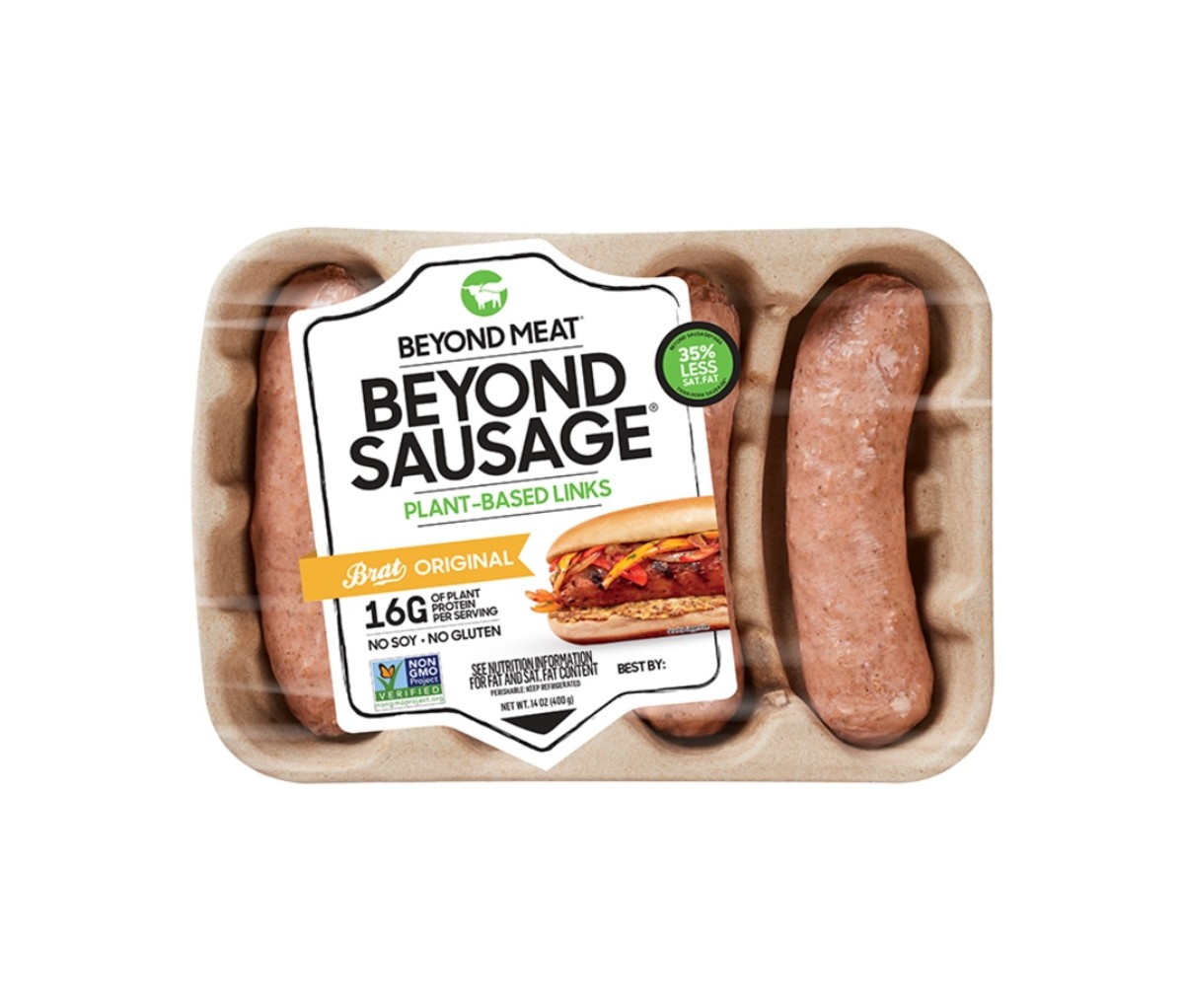
1. Beyond Meat Brat Original Sausage
A wizardly amalgamation of peas, fava beans, and rice protein is emulsified with potato starch and apple fiber to achieve the texture of pork sausage without soy or gluten binders. Beet juice provides color, and an algae-derived casing lends a satisfying sizzle. These links hold up beautifully on the grill, so you can get a full-on char. For a plot twist, slice them up for a killer addition to grilled pizza. Compared to pork brats, each link has 43 percent less fat and 2 more grams of protein (16 g).
[$7; beyondmeat.com]
Get it
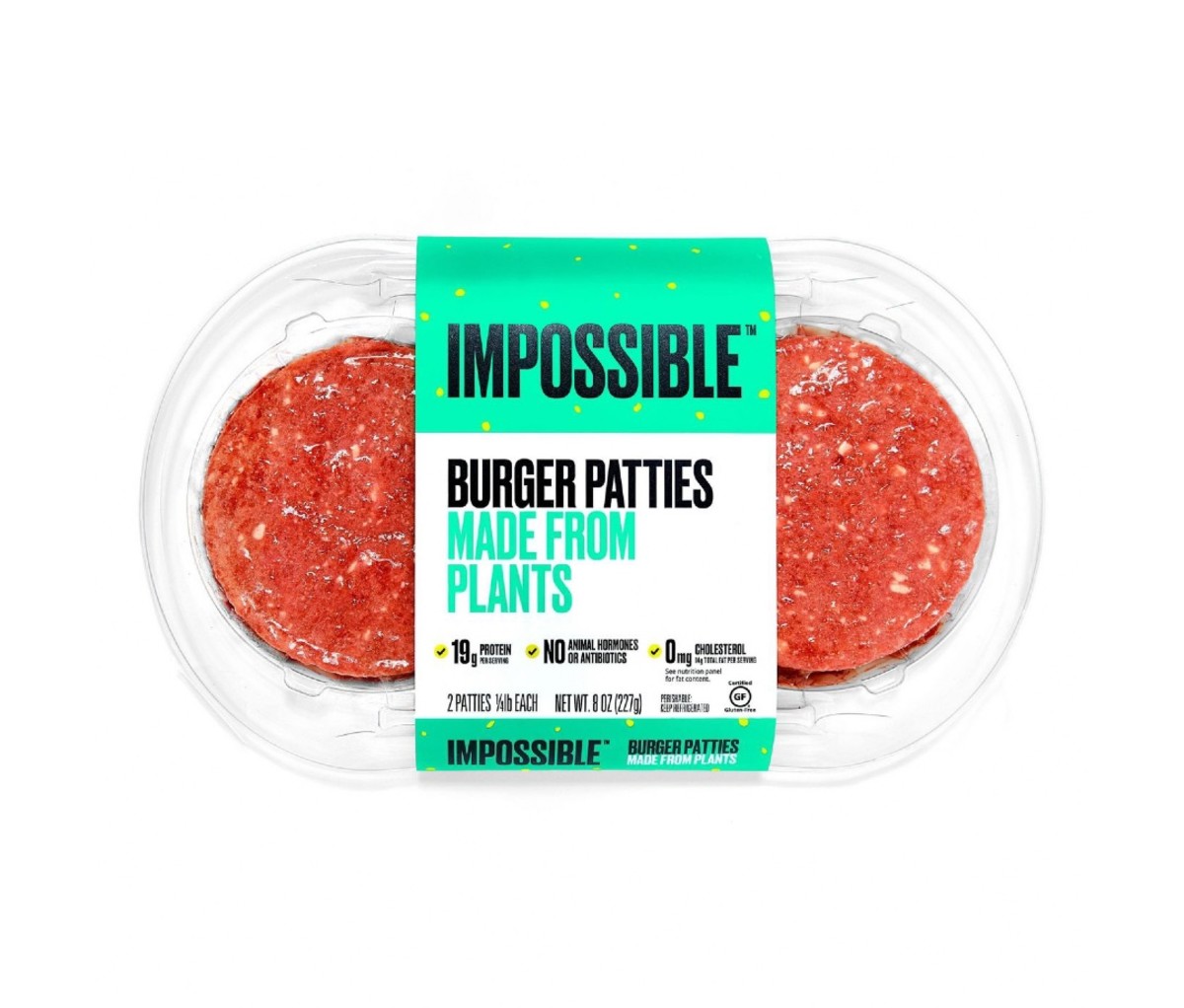
2. Impossible Burger Patties
It looks, cooks, and tastes like beef—but this juicy impostor has no antibiotics or animal hormones,
no cholesterol, and 19 g protein (same as 80/20 chopped meat) from soy. Impossible ferments genetically engineered yeast (more sustainable than the traditional method of harvesting soy plants) to create heme, an iron-rich, crimson-colored molecule that makes the patty “bleed.” These quarter-pounders also generate 89 percent less greenhouse gas emissions than cows do.
[From $5; impossiblefoods.com]
Get it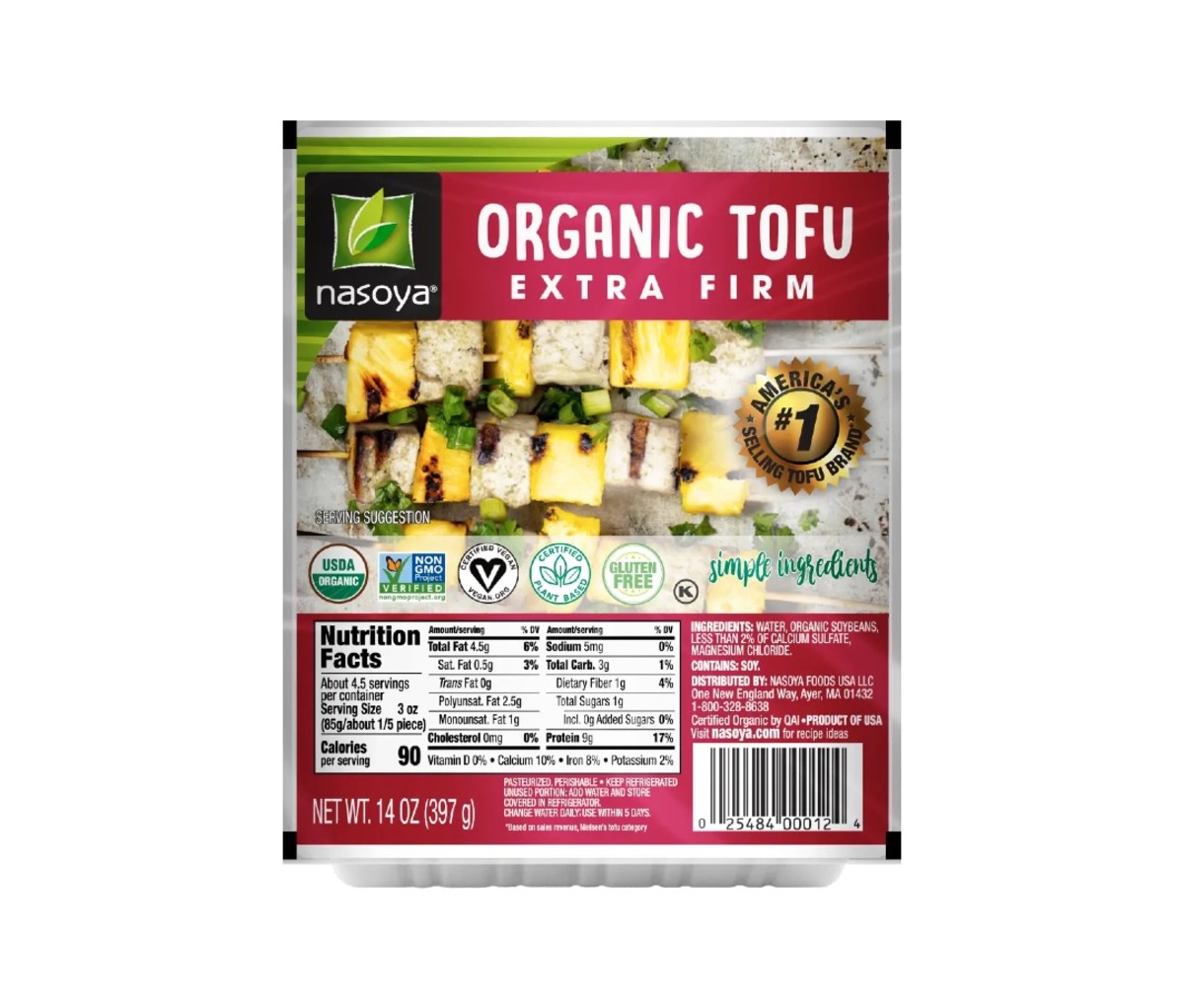
3. Nasoya Extra Firm Organic Tofu
With just four ingredients (mainly water and soybeans) and very little sodium, tofu brings the greatest versatility to your grill. Stack cubes with vegetables and even fruit (think bell peppers, zucchini and pineapple), then play with marinades (marinate overnight to maximize flavor), sauces, and glazes for knockout kebabs. Thai peanut, pineapple teriyaki, or classic BBQ brings this low-fat, cholesterol-free food to new heights. While it’s lower in protein (9 g), it has all nine essential amino acids.
[$3; nasoya.com]
Get it
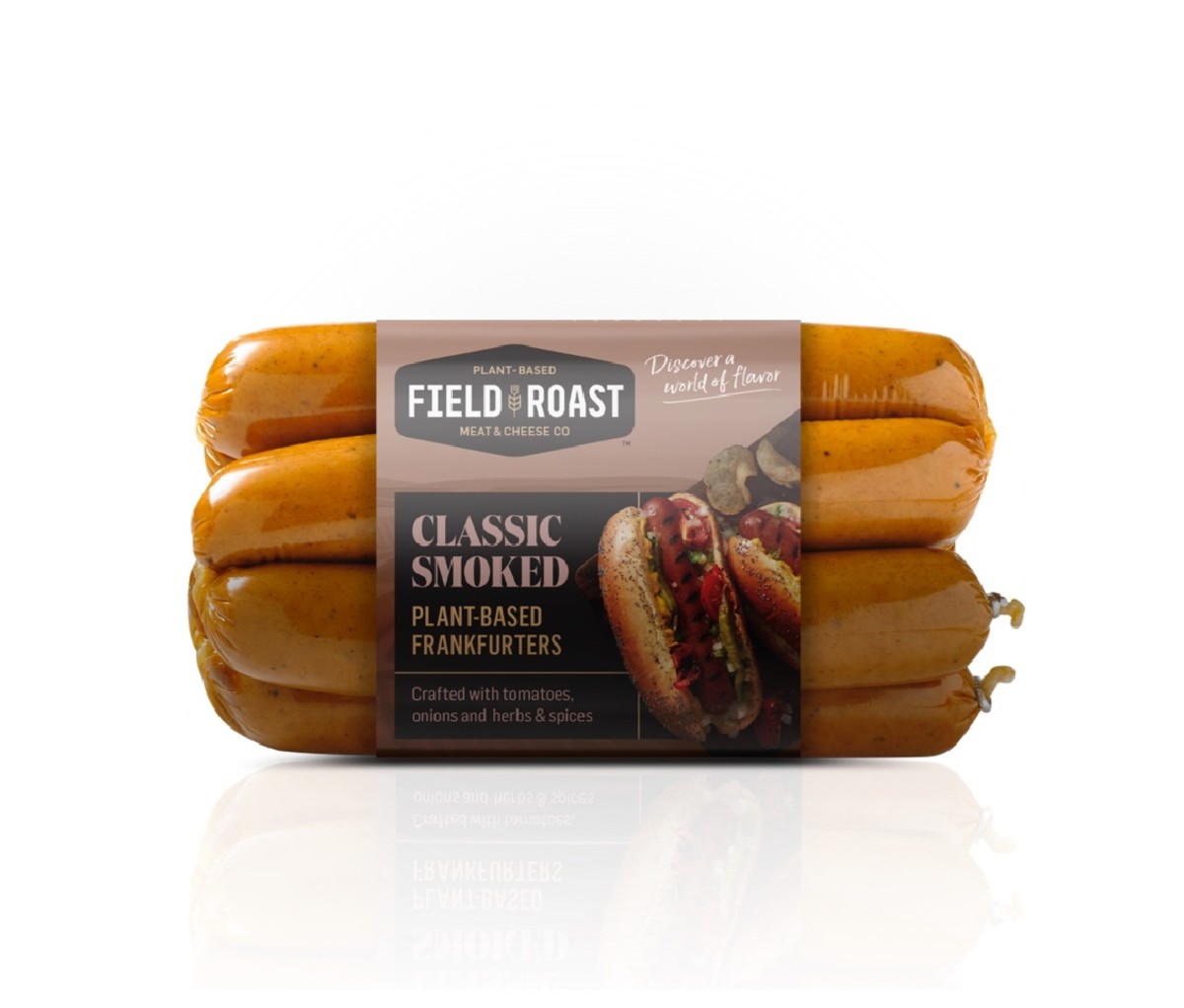
4. Field Roast Classic Smoked Frankfurter
A little smoky with that signature snap when you sink your teeth in, these hearty franks pack 20 g protein. They’re made by forming a “dough” of water, wheat gluten, and plant oils with traditional flavorings: fresh onion and garlic, tomato paste, apple cider vinegar, spices like paprika and celery seed, and hickory smoke. They’re steamed in an oven and come fully cooked. Just get these babies fire-licked, then load ’em up with all the fixings for a classic ballpark dog.
[$5; fieldroast.com]
Get it
5. The Herbivorous Butcher Rib-Eye
Seitan is wheat gluten flour mixed with water. When seared, boiled, baked, and steamed, the fibrous texture builds to mimic the mouthfeel of steak, then vegan fat is folded in to create marbling. This rib-eye gets its iron-rich flavor from tomato paste. And while it’s flavored with soy, Worcestershire sauce, and Dijon mustard, you can still use your favorite marinades and dry rubs. A 4-oz serving has 26 g protein, less than 1 g sugar, just over 300 mg sodium, and 280 calories.
[$33; theherbivourousbutcher.com]
Get itfrom Men's Journal https://ift.tt/2WnpZIv
Usain Bolt on Weed, Chasing the Runner's High, and Athletes Breaking His Records
Usain Bolt is running late to our Zoom interview.
He’s doing a lot of these today. The Olympics have arrived, and the fastest man in history is spending his time a little differently than he would’ve a decade ago. Bolt is here to promote the Michelob ULTRA Beer Run, wherein we mortal runners (and people doing other forms of exercise) can log our workouts and get free Michelob ULTRAs at bars this summer.
I’m excited, because I don’t think I’ve ever interviewed the best in the world at anything, but also because I was objectively faster than Bolt at getting to our Zoom call. I can now tell everyone I know that I was faster, in at least one area, than the fastest man ever. When Bolt does finally appear on screen, I ask if he minds if I brag about this small achievement, and he laughs. Then he straightens up and tells me matter-of-factly that it only matters on the track. Fair enough.
During our call, Bolt and I talked about beer for a minute, and then we moved on to the Olympics, USA Track and Field’s decision to leave Sha’Carri Richardson off its roster for Tokyo, the runner’s high, how he would have fared in an Olympics without fans, and more. Check out our (lightly edited) conversation below.
Men’s Journal: What can you tell me about the Michelob ULTRA Beer Run?
Usain Bolt: If you can prove that you go running, you go to the gym, you do yoga, even cycling—any form of workout you can prove to us by going to our website or to any of our social media handles—you will get a free beer. And this promotion is running all summer. You can get a free Michelob ULTRA on us.
So if I show that I ran a 5K today, that’s a free beer?
For free. For sure.
When you were competing, would you allow yourself to have a beer?
For sure. You have to make time to relax. You work hard, but you have to enjoy it. You can’t just work, work, work. You have to enjoy the work that you put in. So I’d definitely allow myself to just relax and have a beer.
One of the big stories around Olympic track this year has been Sha’Carri Richardson being left off the U.S. team because she had smoked weed. To be clear, is weed a performance enhancer for running? Would you ever smoke it in order to run faster?
I would not know. There’s a list that they show you as an athlete. They tell you, “This is banned. You can’t use it.” So I’ve never really gone into it and tried to figure out if it makes you run faster, or if it doesn’t make you run faster. As long as it’s on the banned list, you avoid it. That’s how I look at it.
I’d just say, you know, it’s tough on her [Richardson]. I know she’s going through a tough time with the loss of her mother and everything. I’d just tell her she just needs to re-focus, and the people around her need to support her and help her to stay on the right path and get back on track. It’s not the end of the world. She still has a bright future ahead of her.
You’re a leader in track. Would you support any changes to track federations’ rules on weed, given what we know about it?
If they do their research and decide that, “Listen, it doesn’t help you to run fast,” then yeah, for sure. It should change. But it’s all up to the people who make the rules to determine that. I can’t determine that. But if they do their research and it shows differently, then it should be changed.
As a competitor, if you found out someone had smoked a joint a month before a race, would you have been OK with them competing?
For me, I always just focus on who’s there. It’s not my job to figure out if you did something bad. As long as you’re on the line as a competitor, I just focus on trying to beat you. I really don’t follow if you got tested once for drugs or whatever. For me, if you show up on the line on that day, you’re my competition. I don’t really worry about that. I let WADA and the IOC and everyone else worry about that. My job is to compete against you.
I’ve always wanted to ask someone who’s the best in the world about this, especially a runner. A lot of us get a runner’s high when we set a personal best, like my best 10-miler or 5K. You can’t be in anyone else’s body, but is there a “Usain Bolt runner’s high” that you think is different than what the rest of us experience?
It’s definitely a great feeling, trust me. Even when we’re in training and you PB [personal best], it feels good. It feels good to know that the work you’re doing is paying off. When I compete and I win, that’s why I celebrate so much, and you can see it come out. That’s just my high. I’m like, “Oh my god, this work that I did paid off.” It’s always just a vibe. Just to know that you did your best and you ran faster than you did last week; it’s a great feeling.
Do you still get a feeling of euphoria out of it, even if you’re just running in the backyard?
I ride on my bike and on my Peloton. Every time I do better, it’s the same feeling, because I’m very competitive. So I try to push myself to be better and better and better all the time. I definitely still get that, for sure.
You mentioned how you’d celebrate after a big race. Did you enjoy playing to a crowd? And do you think it would’ve been tougher, if—as is the case in Tokyo—there weren’t people in the stands to watch you?
Definitely. I don’t think I could’ve done it right now. I live for crowds, and I live for those moments. That first time into the stadium when the crowd goes crazy, it gives me that energy and that vibe to want to compete and do great. To walk into a stadium—an empty stadium—it must be tough. It’s gonna be tough on these athletes to compete at their highest level. I’d just tell them to focus, to work hard, to be determined, and push on.
In some ways, every sprinter in the world is coming for you because of all the records you’ve set. You haven’t had many of your records broken, but American Erriyon Knighton did break one of your junior records in the 200-meter sprint this summer. Some sports legends are excited when a record of theirs gets broken, and some are not. How did you feel?
You’re never too happy when your records get broken. But for me to see someone at his level, it excites me. I think, “How is he going to continue? What level is he gonna be at? How is he gonna handle the pressure?” Because continuing is the hard part. I’m definitely gonna keep my eyes on him, and I’m happy for him. I’d just tell him to continue working hard, to be determined, and to push for his goal.
Of your many records that are still standing, is there one you’re worried someone might break, or one you think will last for the rest of your lifetime?
I don’t know. I really don’t know which one. The 200 meters is my favorite, because the 200 is my favorite event. If I could choose one to stay forever, it would be my 200 meter record for sure.
But I didn’t run for world records. I run to win, to win gold medals, because records will go. No matter how long they stand up, they will go eventually. But I set a high standard for someone to try to get, and I know that’s not gonna be easy. That’s how I look at things.
Was your primary competition Usain Bolt or the athletes on the other blocks?
I live for competition, so I do take everybody beside me seriously as the competition. When somebody shows up and I know they’re in great shape and I know I have to be in better shape to beat them, that’s what drives me. So I do compete with people who are there against me.
This interview has been edited for length and clarity.
from Men's Journal https://ift.tt/3rDT8uL
2021 Maserati Ghibli Trofeo: Luxury and Heart-Pounding Performance
Maserati is synonymous with two things—luxury and racing. With nearly a century of racing under its belt, the Italian automaker uses its on-track experience to enhance every car it produces. But what really sets Maserati apart from other high-end car brands is the company’s ability to blur the line between luxury and performance. Nowhere is this more evident than the premium Trofeo collection.
Following up on the 2018 launch of Maserati’s fastest and most powerful SUV, the Levante Trofeo, the company expanded the Trofeo collection in 2021 to include the Quattroporte and Ghibli—the fastest Maserati sedans to ever roll off the production line.
I got my chance behind the wheel of a Maserati Trofeo Ghibli during a recent track day at Willow Springs Raceway. Located about an hour north of Los Angeles, Willow Springs is one of the most challenging road courses in the U.S., and it makes an ideal proving ground for Maserati’s sleek yet ferocious new ride.
Under the hood of the Ghibli Trofeo sits a Ferrari-built, 3.8-liter twin-turbo V8 engine capable of producing a hair-raising 580 horsepower and 538 lb-ft of torque. Maserati claims that raw power translates into a blistering top speed of 203 mph and a 0–60 time of four seconds flat.

To put those stats to the test, I hit the track with the Ghibli Trofeo. The first test was going from a standstill to 60 mph while using the Launch Control function, which is engaged by selecting the Corsa driving mode and then holding down the brake and the accelerator simultaneously to boost RPMs. Once I released the fat pedal, I was thrown back in my seat and felt the rear tires dancing on the edge of traction but never spinning—a testament to the car’s limited-slip rear differential.
Rocketing down Willow Springs’ historic front straightaway, I eased onto the brakes and headed into the first turn—a 90-degree left-hander—before gunning it onto another straightaway. High-performance driving will toss you around, but the Ghibli’s well-designed seat kept my body firmly in place so I could focus on the track instead of wrestling with G-forces.
With its nine turns, high speeds, and significant elevation changes, Willow Springs is one of the more technical racecourses you’ll find in the States. Despite the challenges, the Ghibli Trofeo’s adept handling made the track feel deceivingly manageable, even for an amateur driver like myself. But it was Willow Springs’ famous turn eight––a long, high-speed, right-hand sweeper––where the car really showed its potential. When switched into the stiffer race mode, the suspension gobbled up the bumps on the nearly 70-year-old track, while the 21-inch wheels wrapped in Pirelli P Zero PZ4’s stayed glued to the asphalt, even when I pushed the needle past 100 miles per hour. The car was asking for even more.
Once safely back in the pits, I had an opportunity to appreciate the finer exterior details of Ghibli Trofeo, including the newly restyled grill, “boomerang” taillights, and sleek carbon-fiber and sporty red accents that stood out boldly against the car’s black paint.
After the heart-pounding track session, I hopped back in the Ghibli for a more relaxed 30-minute drive on a local desert highway. As Joshua trees and desert shrubs whizzed by, I realized that while racing is deeply ingrained in Maserati’s DNA, this car is first and foremost a premium luxury sedan. With the suspension back to regular mode, the Trofeo Ghibli provided a luxuriously smooth and quiet ride.

The luxe interior features red leather upholstery on the dash, a heated steering wheel and seats, and old-school analog gauges that give the car a timeless style. But that’s not to say the Ghibli Trofeo is lacking in tech: It comes with a 10.1-inch touchscreen and a comprehensive infotainment system that supports both Android Auto and Apple CarPlay. The speakers were booming and crystal clear, while the well-placed volume knob made adjusting the sound easy.
As I pulled back into the Willow Springs complex and stepped out of the car for the final time, I was sold. The Ghibli Trofeo provides the best of both worlds: lavish comfort and kickass performance.
Of course, it comes with a hefty $110,240 MSRP. But as for the driving experience? That’s priceless.
[Starting at $110,240; maseratiusa.com]
Get itfrom Men's Journal https://ift.tt/3jeO1gT

























